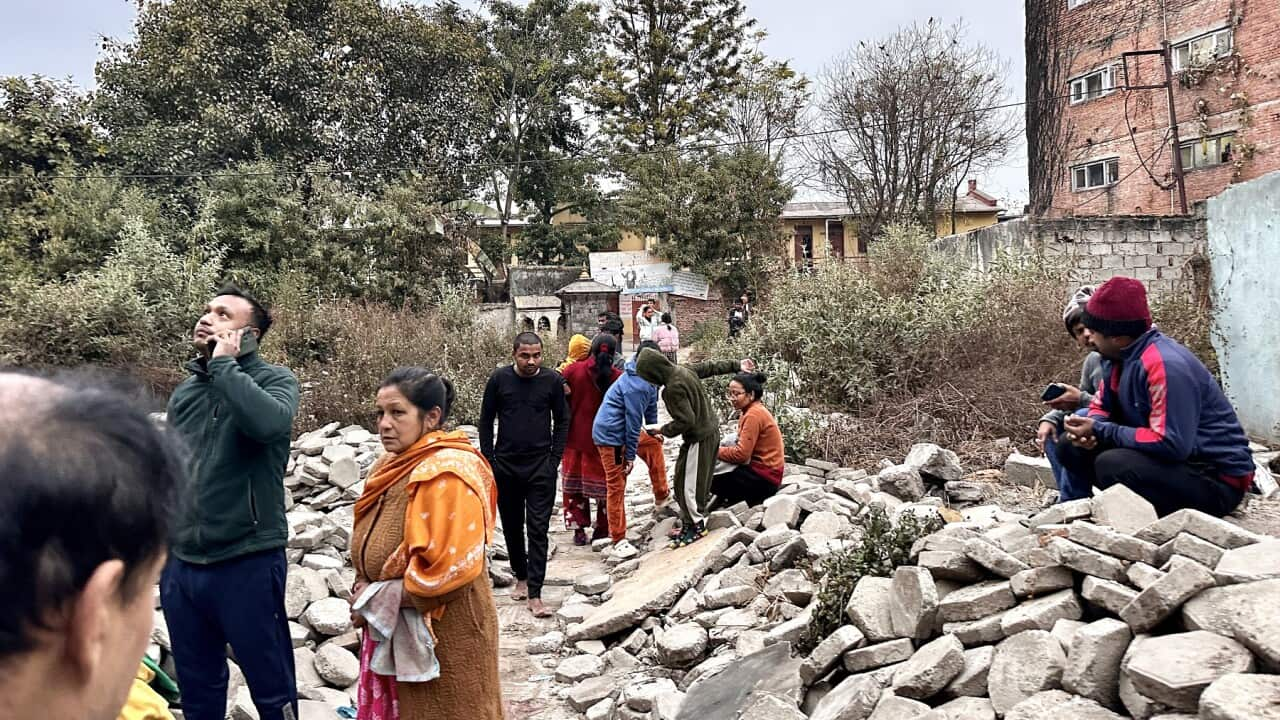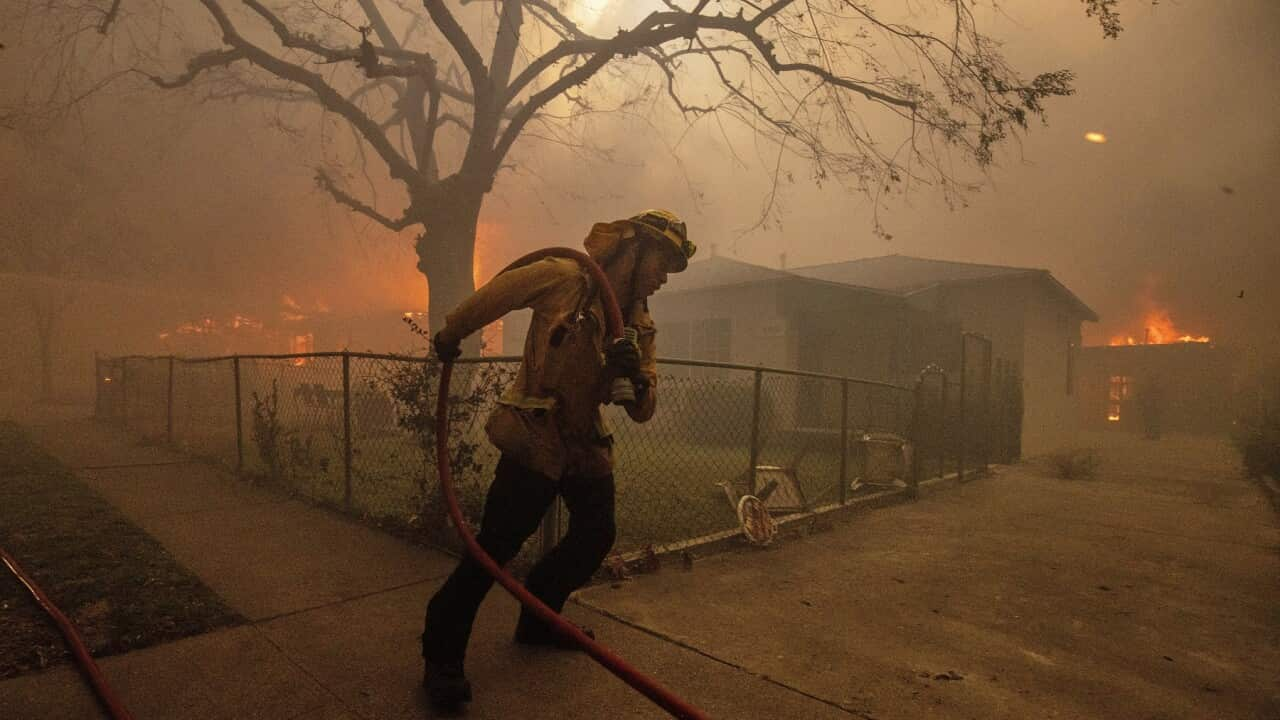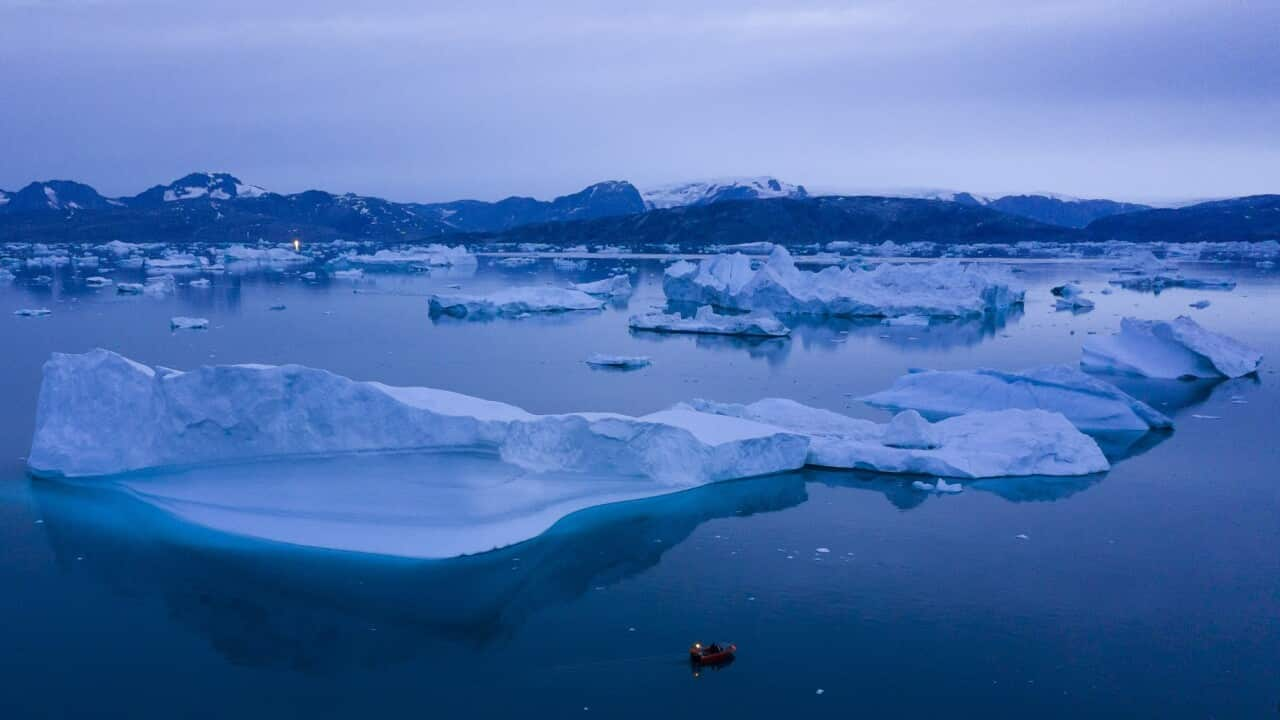TRANSCRIPT
Hoping for the best but expecting the worst.
Rescue workers and local residents in China's remote Tibet region are digging through rubble, looking for survivors after a devastating earthquake.
The quake has caused thousands of homes to collapse, with tremors also felt in neighbouring Nepal's capital, Kathmandu, and parts of India.
The quake struck rural, high-altitude Tingri county, about 80 kilometres north of Mount Everest near China's border with Nepal, at around 9am local time on Tuesday.
From his Mount Everest camp, this German tourist was awoken by a series of violent shakes.
"So this morning I was on Everest in my camp at 5700 metres and, well, my tent was shaking pretty intensely. So I woke up, I looked out and I saw many avalanches coming down down, seracs collapsing, big chunks of glacier like exploding and a pressure wave hitting my tent, doing some damage there. And well, it was just a spicy moment."
The final death toll is yet to be confirmed but state broadcaster CCTV says at least 126 people have lost their lives and close to 200 others are injured, with many in a critical condition.
The China Earthquake Networks Centre measured the quake's magnitude as 6.8, while the US Geological Survey reported it as 7.1.
The area most affected is surrounded by mountainous terrain on the Chinese side of Mount Everest.
Many of the fallen houses appear to be constructed using traditional materials such as stone, mud bricks and wooden beams.
Nepal's National Disaster Risk Reduction and Management Authority says the tremors were also felt in seven hill districts bordering Tibet.
In Nepal's capital of Kathmandu, this resident says she evacuated her house when she realised the tremors were an earthquake.
"I was sleeping when the earthquake struck. The bed was shaking and I thought my child was moving the bed. I didn't pay that much attention but the shaking of the window made me understand that it's an earthquake. I then hurriedly called out to my child and evacuated the house and came to the open ground. I am still shaking out of fear and am in shock."
The impact has also been widespread across Tibet's Shigatse region, home to 800,000 people and the traditional seat of the Panchen Lama, a key figure in Tibetan Buddhism.
The region is frequently affected by earthquakes as it's located where the boundaries of the Indian and Eurasian tectonic plates meet.
Tibetan parliament-in-exile members in India have blamed what they call China’s reckless exploitation of natural resources, including mining and dam construction, for exacerbating the disaster.
Among them is Dolma Tsering, deputy speaker of the parliament-in-exile.
"Since the occupation of Tibet, China has been exploiting the natural resources, the minerals, and so without any well-thought-out measurement to preserve environment when you dig the natural habitat, you will have more and more disasters that are all made by man, the Chinese-drawn policy."
Chinese President Xi Jinping has called for an all-out search and rescue effort and authorities have deployed more than 3,400 rescuers and over 340 medical workers.
Aid - including cotton tents, quilts and cold-weather equipment - has been dispatched by central authorities.
In 2015, nearly 9,000 people died and more than 22,000 were injured when a 7.8-magnitude quake struck Nepal, destroying more than half a million homes.
A quake in December 2023 in northwest China killed 148 people and displaced thousands in Gansu province.













